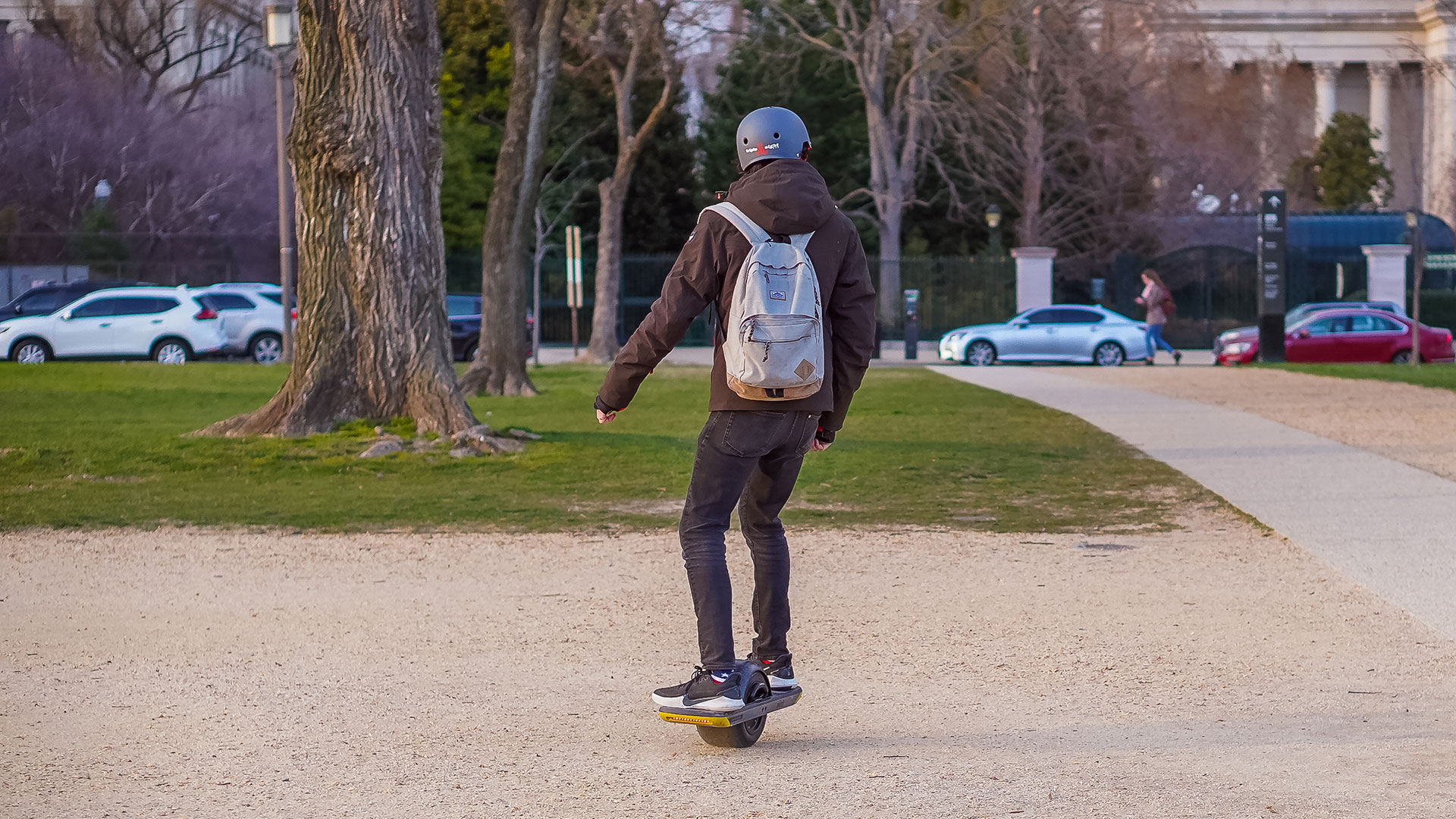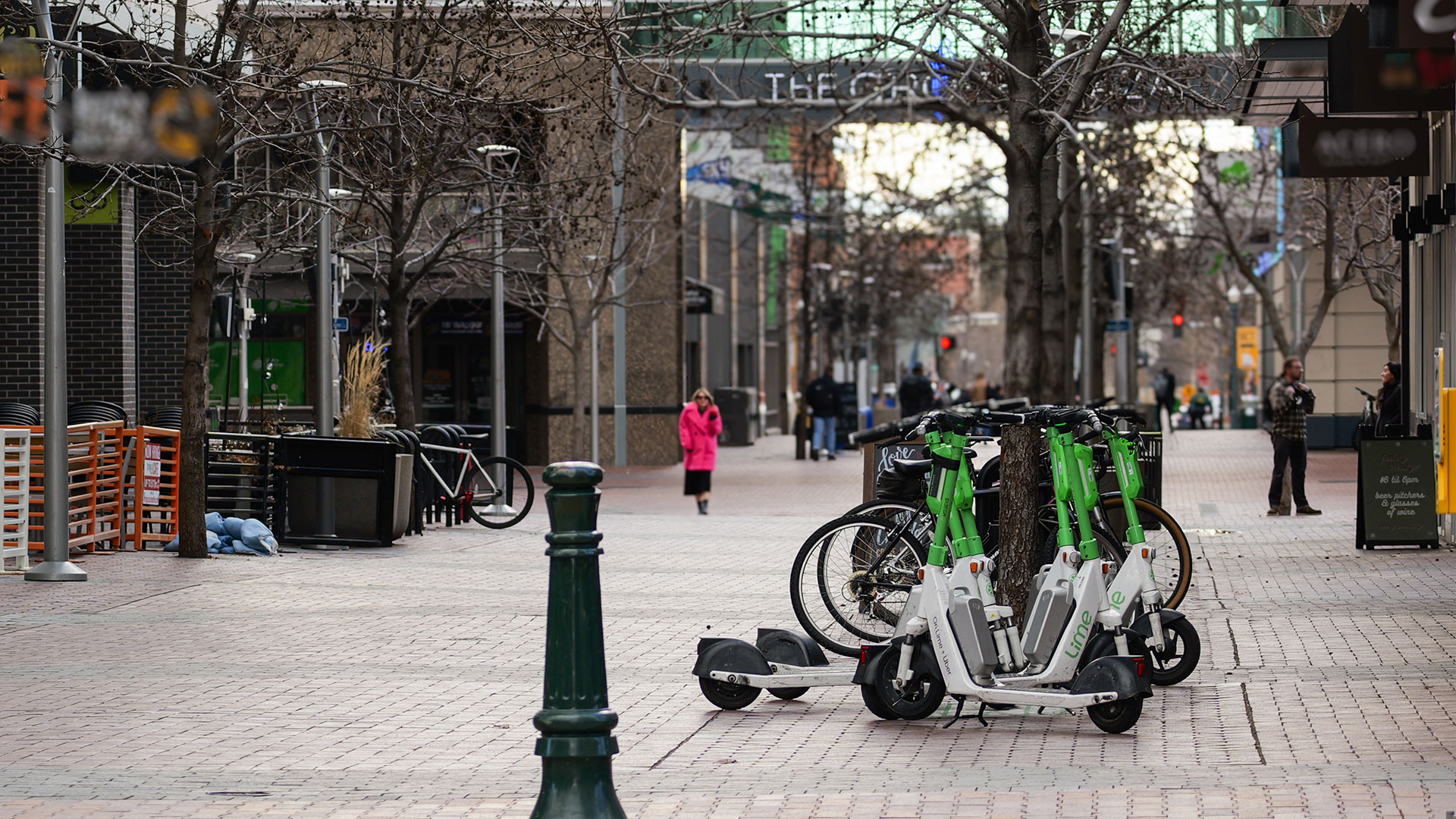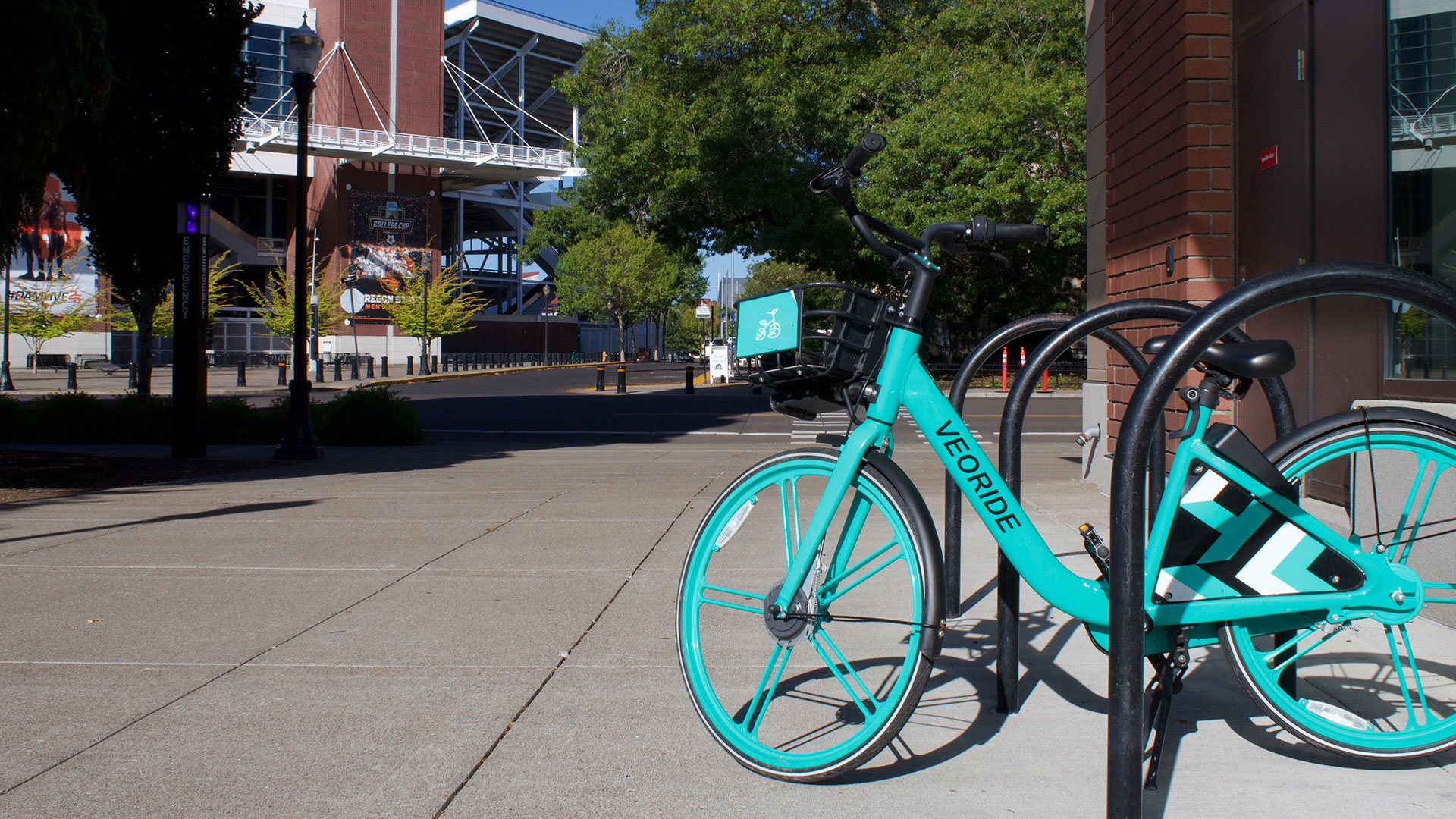April 14, 2025
How to Practically Integrate Micromobility into Transportation Planning Projects
As urban areas grapple with increasing congestion, small vehicles can have a mighty impact in the quest to reduce vehicle miles traveled (VMT). By providing convenient alternatives to hopping in the car, especially for short trips, micromobility devices hold potential to help us reach mode shift goals and create more sustainable and vibrant communities.
Before we get any further, let’s define what we mean when we say micromobility. If “small things with wheels” is too broad a definition for your taste, let’s go with: lightweight personal vehicles that are, at least partially, human-powered. While most people think of e-bikes and scooters when they hear the term, micromobility can also include pedal bikes, electric unicycles, hoverboards, segways, golf carts, and a whole suite of devices that don’t exist yet.
(Note: Depending on where you are, there may be a definition for “micromobility” in local law. The vehicle types captured under this definition can vary. For example, Minnesota includes pedal bicycles, while New York does not.)

Micromobility can include e-bikes, pedal bikes, e-scooters, electric unicycles, hoverboards, segways, golf carts, and a whole suite of devices that don’t exist yet.
Is Micromobility Here to Stay?
In the broad sense of the term, micromobility is one of our longest-standing modes of mobility, with bicycles entering the scene decades before the automobile! But when people question the staying power of micromobility devices, of course they’re typically wondering about the newcomers to the scene. Is the e-bike the new segway—hyped up for a moment, then effectively obsolete outside of an occasional city tour—and are shared bike and scooter systems are just a temporary fad? Should we be planning around these devices and systems as we envision our cities 20-30 years into the future?
Data leads us to believe that e-bikes have indeed “crossed the chasm” of Moore’s technology adoption curve, moving from adoption from the few to that of the masses. E-bikes are now outselling pedal bikes in many European countries, and they’re outselling electric vehicles in the United States. Privately owned e-bikes have a high VMT replacement rate per dollar of investment, leading agencies to put money behind their adoption, such as offering rebate programs. Shared systems are popping up in cities across the country.
All of this indicates that when supported tactically, well-planned micromobility can get people out of cars, helping us address our VMT and mode shift goals. Let’s look at an example just a few miles away from Kittelson’s office in Portland, Oregon.
Oregon Health and Science University (OHSU)’s main campus sits on a hilltop overlooking downtown Portland, so it faces constrained space for parking as well as other mobility-related challenges of the steep journey up the hill. OHSU funded most of the construction costs of the Portland Aerial Tram, which opened in 2007 and carries employees up the hill and back (the rest of construction costs were covered by the City of Portland, who owns the tram). However, given that up to 20,000 employees, patients, and visitors travel to OHSU’s main campus every day, there remained the challenge of limited parking at the bottom of the hill in Portland’s South Waterfront, another constrained urban setting.
OHSU has addressed this challenge by prioritizing the integration of walking, biking, transit, and rideshare. Go By Bike, the largest valet bike parking system in North America, partners with OHSU to offer free valet bike parking near the tram station at the bottom of the hill, as well as same-day bike repair services. OHSU offers incentives to fund bike purchases for employees, students, contractors, vendors, and volunteers ($100 for a pedal bike and $200 for an e-bike). OHSU employees can also loan bikes and e-bikes for free for a few weeks to try before they buy. In 2017, OHSU reported an employee drive-alone rate of only 38% (compared to 58%, citywide, at the same time), and their latest transportation demand management (TDM) plan states a goal to get it down even further, to 30%. Now that’s a mode shift!
Challenges of Planning for Micromobility
Despite the enormous potential for such a varied category of devices to help us work toward mode shift goals, as you can imagine, it also comes with a suite of challenges for the transportation planner.
One prevalent challenge is the design of bike lanes. When devices traveling at different speeds share the same space (for example, a person walking and a person pedaling an e-bike), the traditional ten-foot multi-use path or four-foot bike lane may not be sufficient to allow for safe passing. As electrified micromobility devices are growing in popularity, transportation engineers need to think ahead and develop ways to clarify expected behaviors, provide adequate passing space, and separate these different modes in space and time, when desired.
Funding of shared micromobility programs is another challenge. Most shared programs are not financially self-supporting without hefty (and likely unrealistic) user charges, or venture capital funding, which has slowed. Shared micromobility programs will need to be publicly subsidized and considered a form of public transportation (which has seen success in cities including New York City, Washington, D.C., and Portland). Upfront cost can also be a prohibitive factor, as electrified micromobility devices can be expensive, and many potential buyers—particularly those in multifamily housing—may be concerned about theft.
Thirdly, developing regulations for micromobility devices is a common challenge across agencies. The constantly evolving form factors, use cases, and device capabilities in the micromobility world makes it a difficult one to regulate, begging the question of if regulation should be centered around device classifications or user behavior. Some states also have restrictions on the age of e-bike riders, which makes providing youth-focused education on micromobility use more challenging.

Practical Tips to Integrate Micromobility into Planning Projects
In light of these challenges (and related opportunities), how can we effectively integrate micromobility into planning projects and tap its potential to reduce VMT, especially when we’re looking a decade or two into the future? Here are a few of our suggestions:
1. Know what you’re trying to achieve. Is your goal connecting to transit? Replacing car trips? Providing better transportation options in low-income neighborhoods? It’s essential to start with a clear understanding of your problem statement, goals, and who you’re designing for. Each goal should lead to different strategies and ways of measuring success.
2. Take time to understand your options. There are many types of programs you can run, ranging from purchase incentive and education programs to infrastructure interventions to working with housing developers to include secure bike parking in new complexes. Once you are clear on your goal(s), take time to assess your options before jumping to a solution. The Transportation Electrification Infrastructure Needs Analysis (TEINA) is a good example of a thoughtful, multidisciplinary approach to assess transportation electrification charging infrastructure needs and gaps throughout Oregon, aimed at helping the state achieve its zero emission vehicle (ZEV) adoption targets. As a supplement to TEINA, we developed a report that provided strategies for the Oregon Department of Transportation to encourage electric micromobility growth. The report identified five barriers to adoption—safe infrastructure, education and awareness, cost, data, equity, and administration and policy—and tactics for overcoming each.
3. Connect with your community. Don’t underestimate the effectiveness of community programming and outreach. Many people would choose to bike if they felt more safe and comfortable on the facilities. (On the flip side, one stressful intersection or stretch of roadway can be enough to dissuade someone from choosing to bike at all.) Create connecting points with your community to understand their biggest challenges and concerns, and to put forward projects and plans for input.
4. Think of bike lanes as “mobility lanes”. What we think of as a “bike lane” is a space that is now expected to accommodate a variety of users and devices traveling at different speeds—pedal bikes, e-bikes, scooters, etc. Designing these lanes as “mobility lanes”, wide enough to allow faster-moving vehicles to comfortably pass slower-moving vehicles, helps us reframe our definition to account for a greater diversity of vehicle types, both now and in the future.
5. Regulate behavior, not devices. As we mentioned above, new devices are constantly entering the scene, making it challenging to keep regulations up to speed—not to mention challenging to differentiate different classes of vehicles on the spot. We suggest focusing on the “how” rather the “what” (in other words, the behavior of the user rather than the class of vehicle they are using). 20 mph is 20 mph regardless of what device is being used; an easier regulation to understand and enforce. Education is a key piece of this puzzle, as micromobility devices encourage new people to try active transportation.
Give It a Try with a Pilot Project!
Pilot projects can demonstrate how a micromobility system will work, which can help inform long-term strategies. As an example, let’s look at the college town of Corvallis, Oregon, home to Oregon State University (OSU).
The goal of OSU’s Sustainable Transportation Strategy is to decrease the percentage of single occupancy vehicle (SOV) trips from 30% to 20% by 2030. The strategy included an exploration of shared micromobility services, the timeline of which was accelerated by excitement from the student body. In August 2024, OSU launched a shared bike and scooter pilot with Veo, putting 313 electric scooters and 57 pedal bikes on the streets of campus. The service area also currently extends to some businesses and dwellings off-campus, providing a commute option to OSU from nearby housing and the option to run errands.

In August 2024, Oregon State University launched a shared bike and scooter pilot with Veo, putting 313 electric scooters and 57 pedal bikes on the streets of campus. Image credit: Oregon State University.
Between August 8th and December 31st, 2024, Veo’s data revealed that nearly 9,000 individual riders used the system, logging nearly 90,000 rides and more than 125,000 miles. 74.4% of respondents to a rider survey in October 2024 said they had been able to decrease car travel because of the shared scooters and bikes.
“I have been blown away by the sheer number of people using the program and benefiting from it,” said Elza Records, OSU Sustainable Transportation Coordinator. “Class change times are short and shared micromobility is filling a need for students who need to get across campus and don’t have a personal bike or scooter.”
In the second half of the pilot, Elza said they’ll be working on more orderly parking of the micromobility devices through technology and user education, and ultimately assessing if and how the new mode fits into the bigger picture of active transportation in the Corvallis community.
“We’ll be looking to see how it’s moving the needle on reducing single occupancy vehicle trips. At this point it seems really promising,” said Sarah Bronstein, OSU Sustainable Transportation Manager. “Big picture, I can’t stress enough how effective it is to roll something out as a pilot. There is more flexibility to do brave things. You’re being up front with the public and your partners in the spirit of learning, and it also forces you to be evaluative.”
Continue the Conversation
There is so much more to talk about regarding this topic, and we’d love to hear from you! Where have you seen micromobility contribute to mode shift? What ideas do you have to leverage “small things with wheels” to shape safer, more sustainable communities? What challenges are you facing? Reach out to share your experience!
